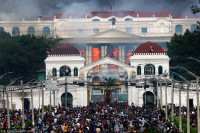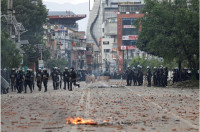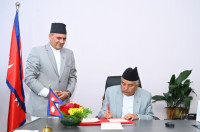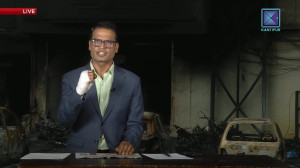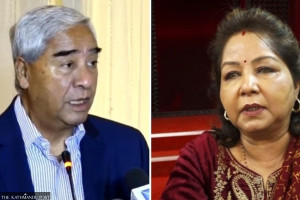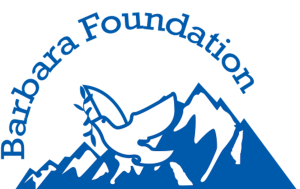Opinion
The moment of truth
Dalits see converting to Christianity as an escape from the caste system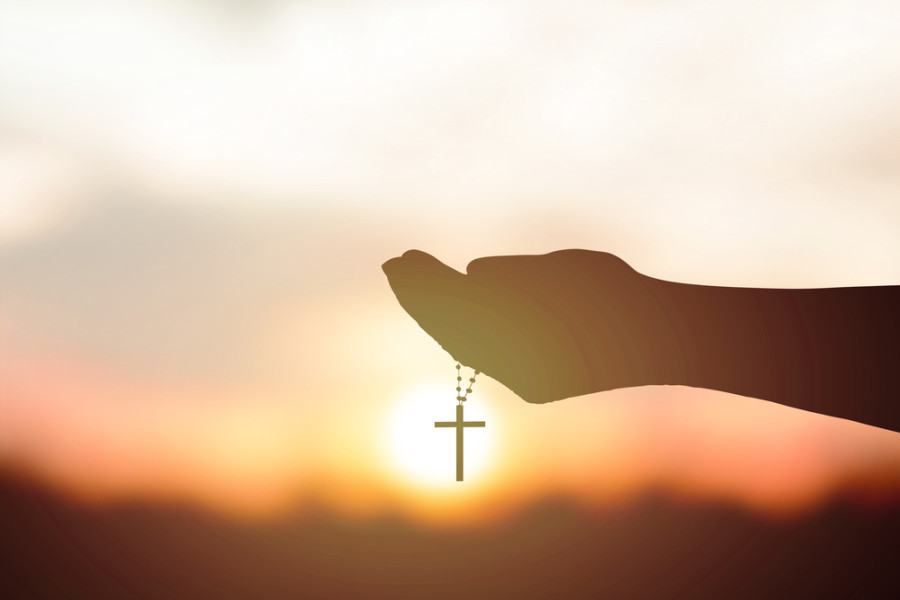
In 1993, Bimala Gayak joined 20-22 peers in Madi Municipality-8 in Chitwan to carry stones and clay and invest money to construct Baikuntheshwar Mahadev Temple. As she explained in a recent talk, after setting up the temple, they started worshipping. But some Bahuns took over the temple and appointed a priest who restricted Dalits from entering the temple grounds. Bimala and her friends immediately remembered poet Laxmi Prasad Devkota words, “A man is great by heart not by caste”. Bimala wanted to get rid of the humiliation, exploitation and exclusion. Later she moved to Kathmandu. In 1996, she found a place she could worship without any discrimination: a Christian Church.
Over the decades, Christianity has spread rapidly in Nepal. The Christian population in Nepal jumped from 0.2 percent in 1951 to 1.5 percent in 2011. There were no Christians before 1951 but nearly 500 by 1961. By 2001, approximately 102,000 Nepalis had converted to Christianity. Then came a big jump: in 2011, the number of Christians reached to a whooping 375,000. In fact, The World Christian Database claims Nepal has the fastest-growing Christian community in the world. And strikingly, 65 percent of the Christian population comes from the Dalit community.
This growing conversion has stirred anxiety and anger amongst the upper-caste policy makers and social media pundits. Their anger is directed towards the people who have converted to Christianity to western donors like the European Union. The status quo wrongly believes that such organisations provide support to Dalits and poor people to lure them into conversion.
But making a hue and cry about religious conversion makes little sense without analysing the deeper causes. For starters, it is imperative to understand how members of the Dalit communities are treated every day. Upper caste people discriminate, humiliate, and deprive them of Hindu rituals and rites. Caste society has placed them in the “lowest” rank. It does not allow them to enter temples. In rural areas, they can’t enter the houses and kitchens of upper caste neighbours. Inter-caste marriage is still a widespread taboo.
Dalits have faced discrimination for centuries. Aahuti, a well known Nepali writer argues that the root cause of caste-based discrimination can be seen in Manus Smriti some 3,500 years ago. In Nepal, Patan’s Jayasthiti Malla was the first ruler to enforce the caste system, establishing “Nyaya bikasini” in 1380. In the early 16th century King Ram Shah of Gorkha reinforced the caste system with his “twenty-six laws”. In 1854, Jung Bahadur Rana created a strict legal code based on the caste system.
As Dalits started growing aware or being dissatisfied of the injustice of the discriminatory they look to escape the oppressive Hindu caste-system by converting to Christianity.
The quest of Dalits to live an equal and dignified life is a human drive. They have the right to live their lives as non-Dalit Hindus do. They have the right to eat at the same table with other Nepalis without prejudices. Similarly, they have the right to marry whomever they chose. This denial of basic human rights leaves Dalits disenchanted with a religion that has never thought of them as fellow human beings.
Some argue that Dalits who convert to Christianity do not have capacity to make informed choices about conversion. True, many of those who have converted to Christianity are illiterate. Some may have received financial support from foreign donors. But do we really have enough moral ground to blame them for giving up Hinduism? Can we honestly claim that they were treated equally and with dignity in Hindu society? Has the state ensured equal distribution and redistribution of resources for Dalits and the poor? Has the state tried any reparation measures? Have their livelihood needs been addressed by the state? What has the state done? What have Hindus done to ensure equality to Dalits?
In spite of the fact that the Constitution of Nepal declared Nepal as a secular state, Article 158 of the Criminal Code 2017 bans proselytising. The ban is based on the wrong assumption that religious conversion has increased because there are people who persuade the Dalit and the poor to convert to Christianity. In fact, many opinion and policy makers blame the 2015 secular Constitution for the rise in conversion.
But the ban on conversion and blaming the victim (Dalits) will not do much. A few legal measures cannot undo centuries of discrimination, humiliation, and deprivation. Neither can it minimise Dalits’ suffocation and the so called higher caste people’s ill-treatment nor can it alleviate Dalits’ affliction. The exploitation and suppression of the Dalits is still largely a feature of the Hindu society.
The Constitution of Nepal 1990 created punishments for discrimination against Dalits. The Caste-Based Discrimination and Untouchability (Offense and Punishment) Act 2011 criminalised caste-based discrimination. The Constitution of Nepal 2015 guarantees the equality of all citizens and has guaranteed the fundamental rights of Dalits. But these mere legal provisions criminalising caste-based discrimination do not seem to have improved Dalit lives.
Hinduism’s discriminatory and oppressive system weakens the religion. Unless the religious texts are revised and Hindu philosophers and gurus internalise that every human being is equal, Dalits will continue to choose conversion as a victim’s passive and polite reaction to discrimination and violence.
Maharjan is a participant at the Dalit Reader’s Writing for Social Justice Workshop.




 19.02°C Kathmandu
19.02°C Kathmandu

